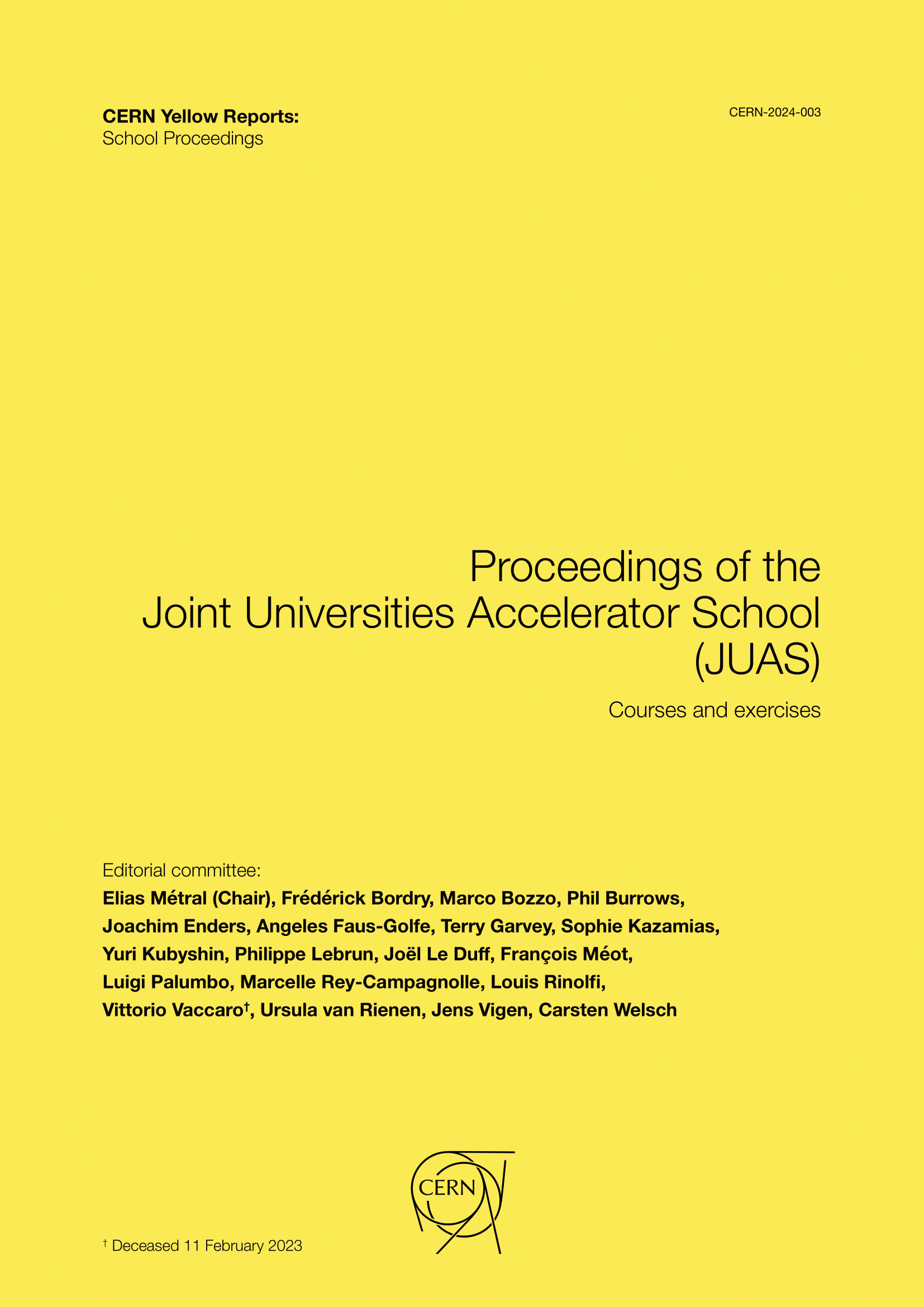I.12 — Collective effects
DOI:
https://doi.org/10.23730/CYRSP-2024-003.539Abstract
Particle accelerators use external electromagnetic fields to guide and accelerate charged particles. In a real machine, however, there is another source of electromagnetic fields, the beam itself, which, interacting with the accelerators’ devices, produces additional self-induced fields which perturb the particle’s motion leading to the so-called collective effects.
The self-induced fields are commonly divided into space charge fields, generated directly by the charge distribution and including the image currents circulating on the walls of a smooth, perfectly conducting pipe, and the wakefields, produced by the finite conductivity of the walls, resonant de- vices, or any geometrical variation of the beam pipe.
Collective effects in particle accelerators are one of the key constituents for determining the ultimate particle accelerator performance. Their role is becoming increasingly important as particle accelerators are being pushed to ever higher intensity and beam brightness.
Downloads
Published
Issue
Section
License

This work is licensed under a Creative Commons Attribution 4.0 International License.
Authors who publish with this publication agree to the following terms:
- CERN retains copyright and publishes the work licensed under the Creative Commons Attribution License 4.0 that allows others to share the work with an acknowledgement of the work's authorship and initial publication in this series.
- Authors are able to enter into separate, additional contractual arrangements for distribution of the published version of the work (e.g., post it to an institutional repository or publish it in a book), with an acknowledgement of its initial publication in this series.
- Authors are permitted and encouraged to post their work online (e.g., in institutional repositories or on their website) prior to and during the submission process, as it can lead to productive exchanges, as well as earlier and greater citation of published work (See The Effect of Open Access).

